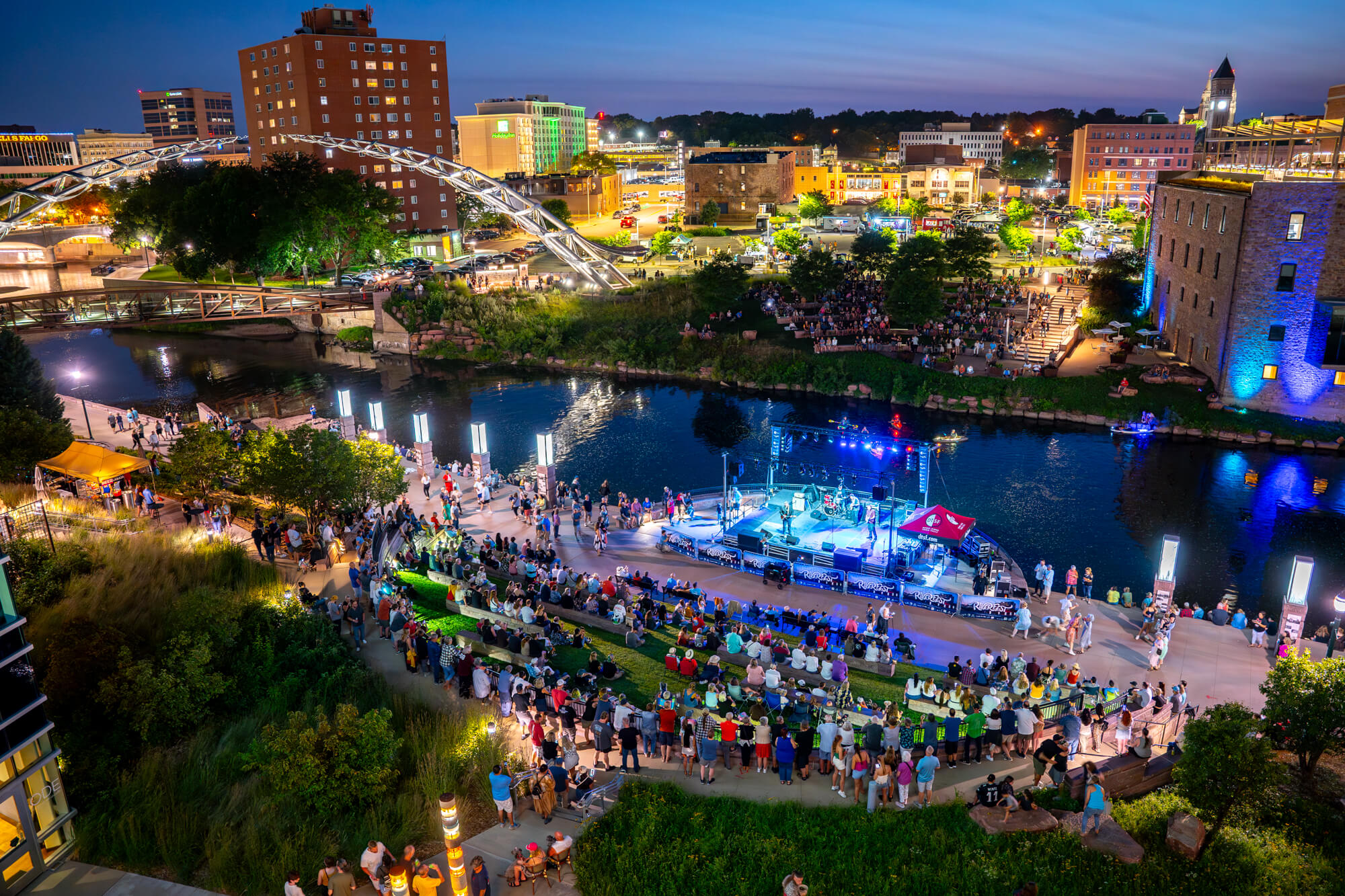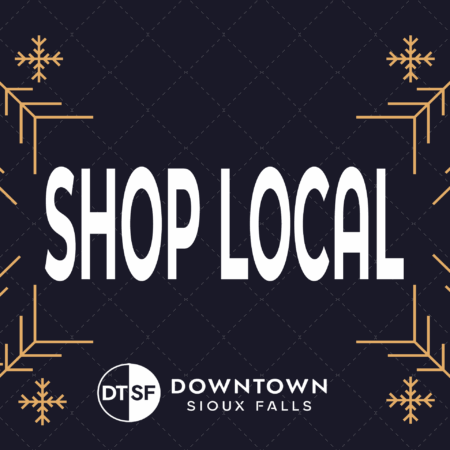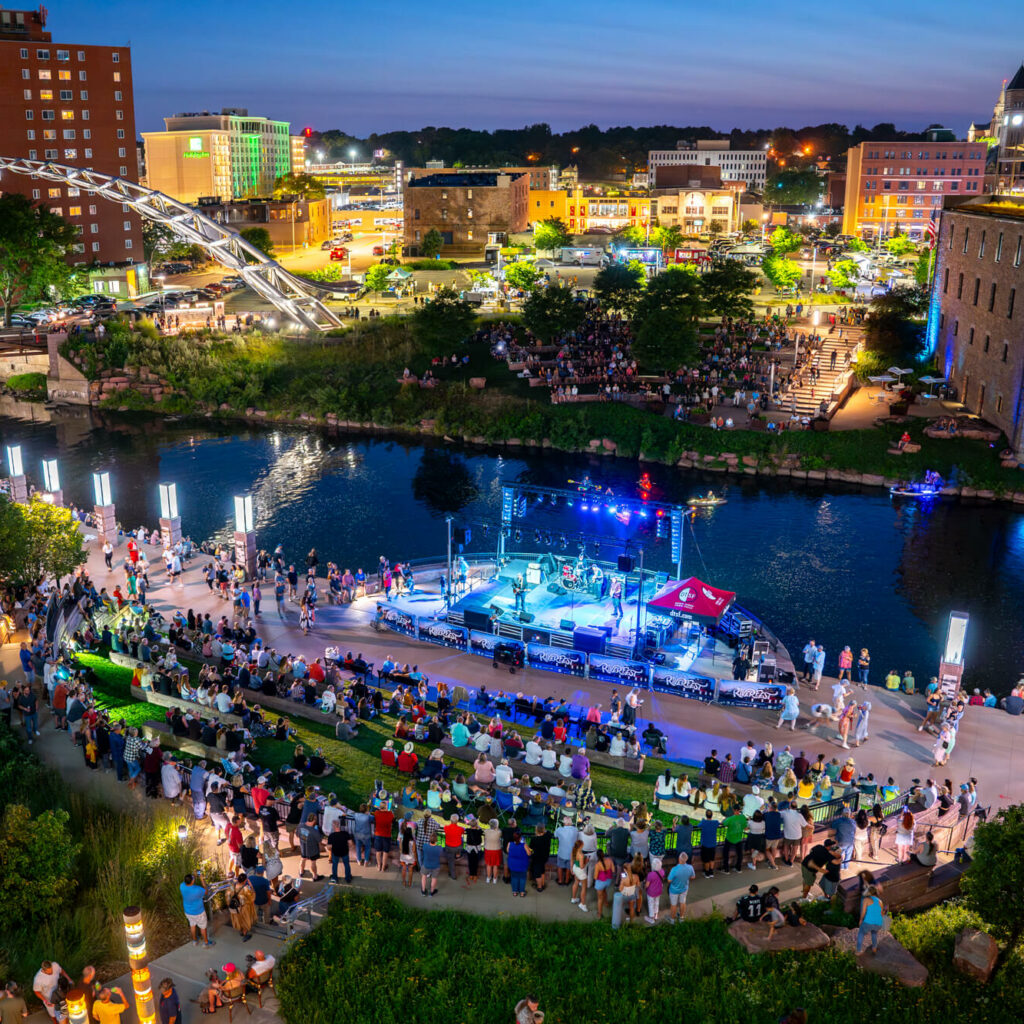
Downtown Sioux Falls is more than just the heart of our city; it is a reflection of who we are and where Sioux Falls is headed. As we look to the future, it’s essential to understand why investing in downtown is not just beneficial but vital for the prosperity of all who call Sioux Falls home. Let’s explore why downtown matters and what future opportunities there may be.
Joe Cortright from Impressa Consulting points out that healthy downtowns are essential for the overall wellbeing of a city. Residents of cities with vibrant downtowns have greater economic opportunities as a result of their social connectedness. They tend to have a higher overall level of educational attainment, which translates to a higher median household income. They also have more transportation options, which leads to cost savings and more discretionary income per household.
What defines a healthy and vibrant downtown?
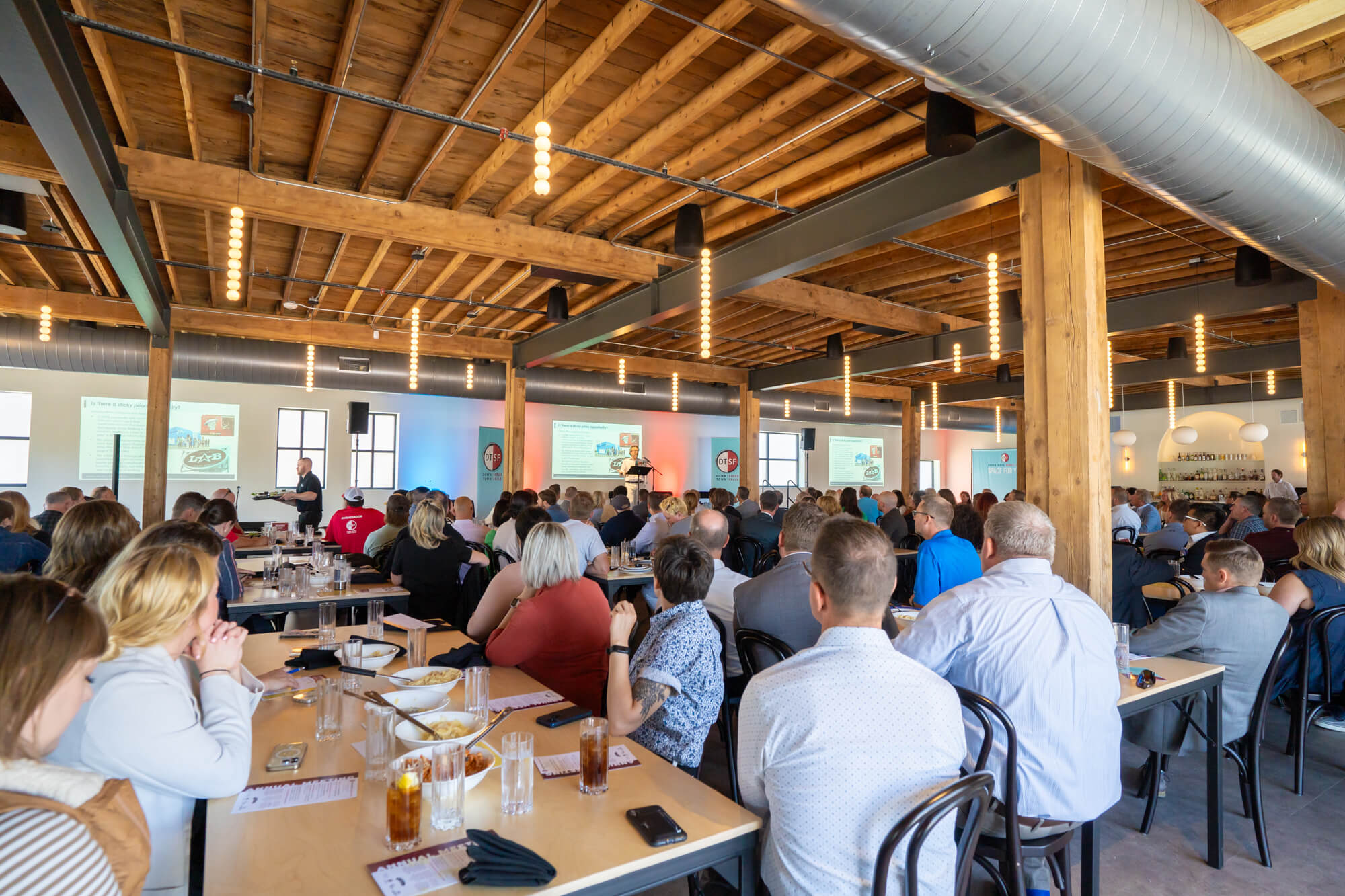
Every couple years, the International Downtown Association (IDA) issues a report entitled, The Value of U.S. Downtowns and Center Cities. This report identifies five key principles—economy, inclusion, vibrancy, identity, and resilience—and analyzes more than 100 key data points within the principles to quantify the value of a given U.S. downtown.
Here’s how the IDA benchmarks each of those key principles and how Downtown Sioux Falls compares.
Economy: Thanks to the density of economic activity, downtown investment provides a higher level of return per dollar invested than other parts of the city.
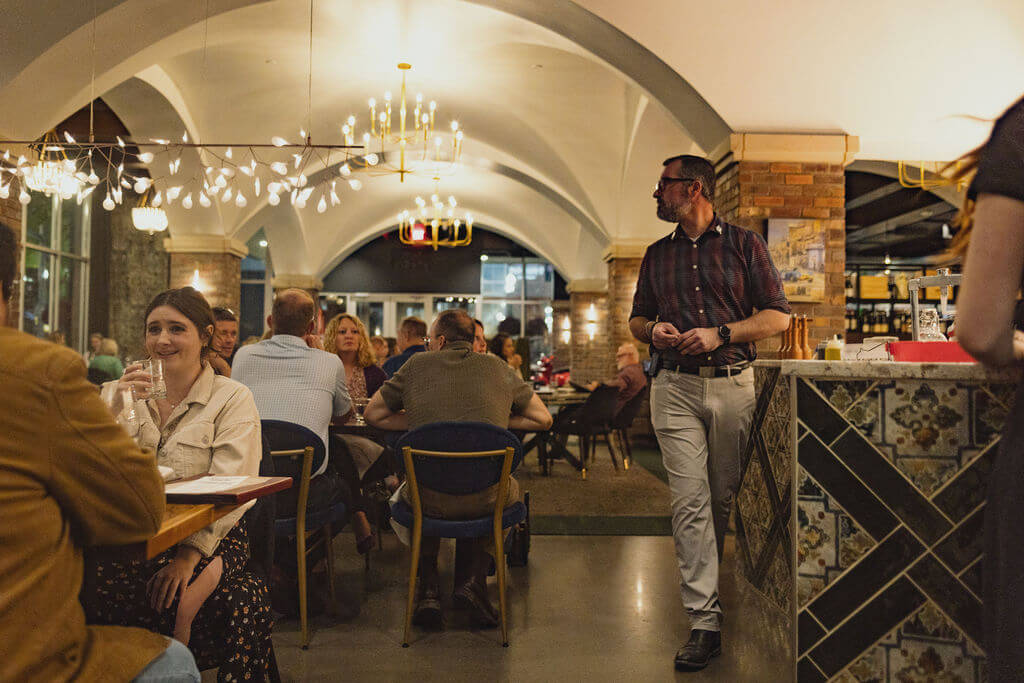
Downtowns are economic centers of tax revenue generation, employment, and commercial real estate. They out perform the rest of their cities when comparing property tax revenue, hotel tax revenue, and sales tax revenue. Downtowns on average contain 12% of assessed land value, 24% of total employment, and the lion’s share of a city’s office space.
How does Downtown Sioux Falls stack up?
- 1% total land area (0.75 square miles)
- 2.5% of assessed property tax revenue (2022)
- $4,311.50 property tax revenue per acre vs. $1,792.65 for Sioux Falls
- 8.3% of total employment (13,300 of 160,000)
- 13.4 jobs per acre vs. 2.2 jobs per acre for Sioux Falls
Inclusion: Downtowns provide access to opportunities and essential services for diverse users, positioning them as highly inclusive urban nodes. On average, downtowns have residents who are 46% non-white, 29% middle income, 53% hold a bachelor’s degree or higher, and 46% are between 18-34 years of age.
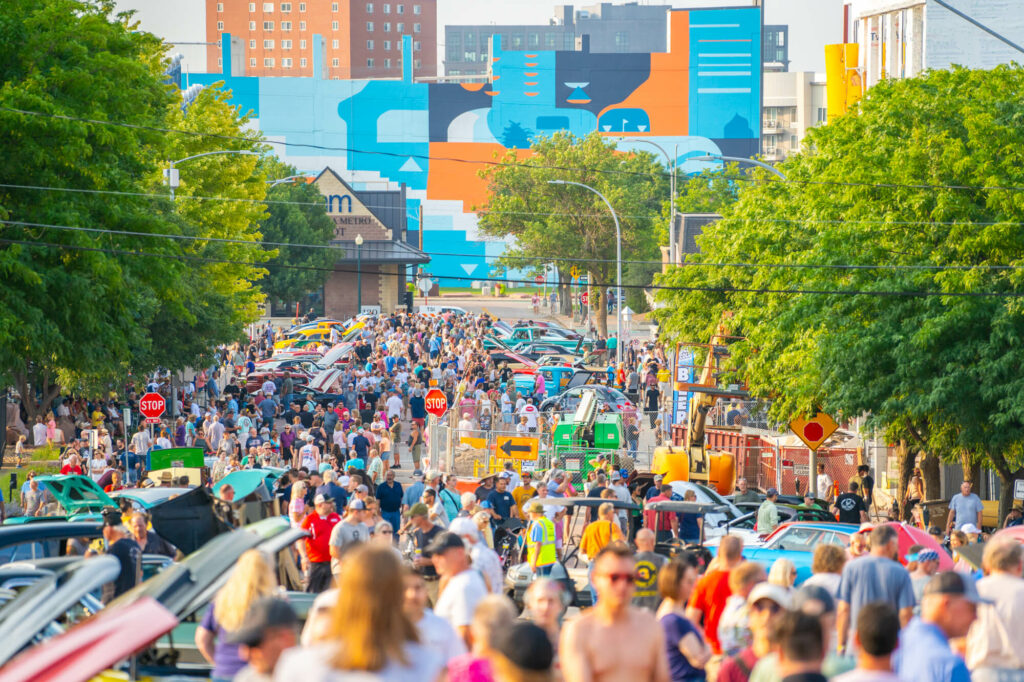
How does Downtown Sioux Falls stack up?
- 33.5% non-white
- 35.2% middle income
- 48.1% hold a bachelor’s degree or higher
- 41.2% of residents between 18-34 years of age
Vibrancy: Due to their higher density and expansive user base, downtowns support a vibrant variety of retail, infrastructure, and institutional uses which offer mutually reinforcing benefits to the region.
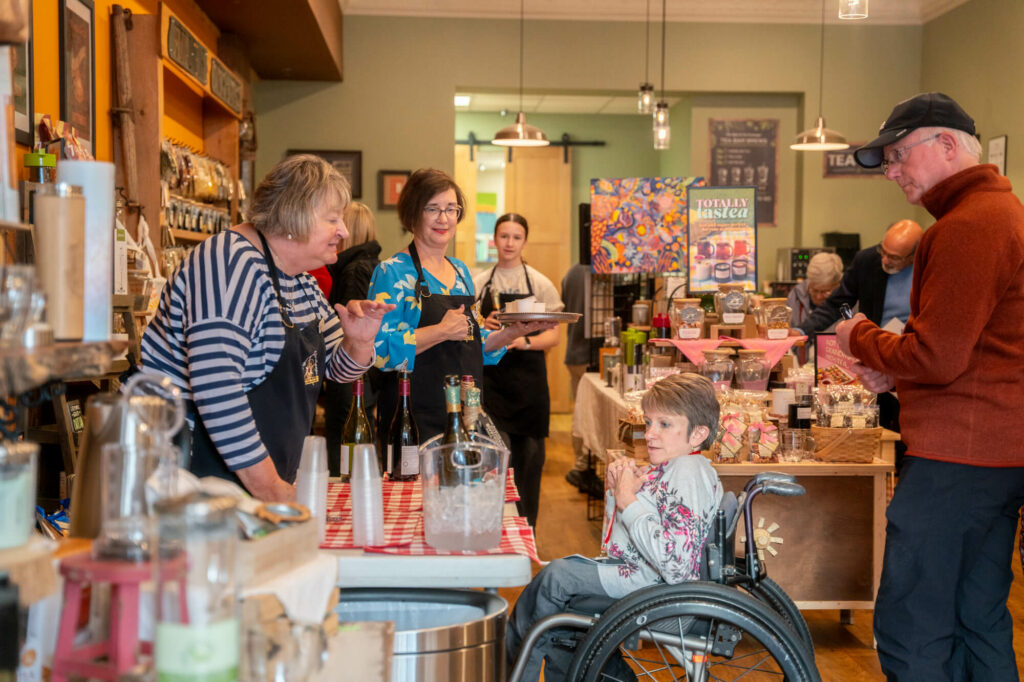
Downtowns have typically outpaced their cities in residential growth since 2010, growing an average of 1.77% against the citywide average of 0.54%. Downtowns are also regional shopping, nightlife, and entertainment centers. The average study downtown contains 14% of all citywide retail, food and beverage businesses, 35% of all hotel rooms, and generates nearly 10 times the citywide average for sales tax per square mile.
How does Downtown Sioux Falls stack up?
- 13.3% downtown residential growth vs. 2.4% growth citywide (2023)
- 8% of all citywide retail
- 14% of all hotel rooms
Identity: Downtowns have intrinsic cultural significance, defining the region’s brand by offering historical assets, culture, recreation, entertainment, and participation in civic activities. A blend of old and new, downtowns provide a high quality of life that attracts employers, investment, visitors, and residents. Downtowns are rich with civic and community places, museums, public art and historic structures.
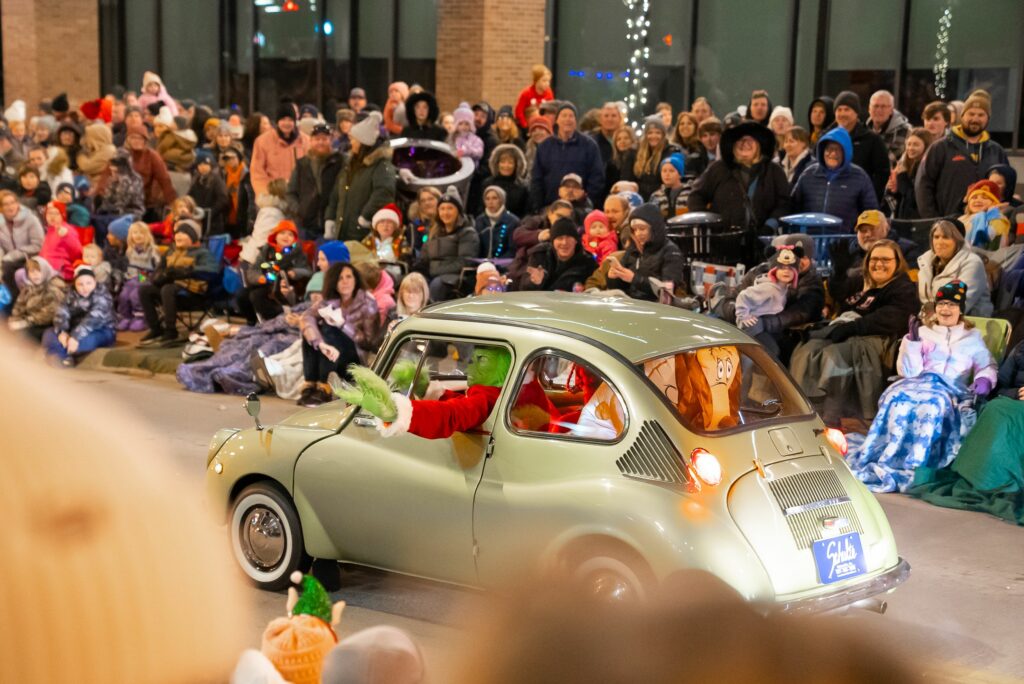
Downtown Sioux Falls embodies this with its historic architecture, welcoming public spaces, and vibrant arts scene, including Levitt concerts and SculptureWalk.
How does Downtown Sioux Falls stack up?
- 16 civic & community places
- 2 museums
- 84 public art installations
- 74 historic structures
Resilience: The mixed-use nature of a downtown allows for residential uses alongside commercial, connected by a variety of mobility options. Downtowns consistently and significantly rank higher than their city in Walk Score (86 downtown, 49 city), Bike Score (76 downtown, 53 city), and Transit Score (60 downtown vs 34 city). The average downtown contains 5 parks per square mile, providing a multitude of health, environmental, well-being and sustainability benefits.
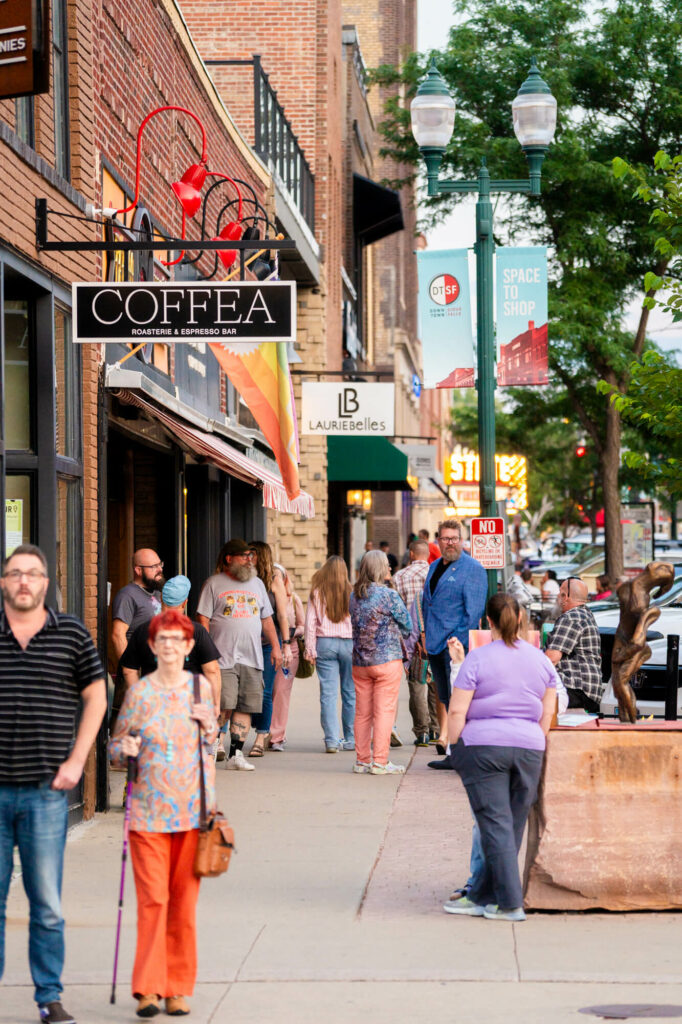
The diversity and density of resources and services in downtowns make them inherently better able to rebound from economic, social, and environmental shocks and stresses than other parts of the city and region. If one sector of the market is in decline, downtown can continue growing in other market areas.
How does Downtown Sioux Falls stack up?
- Walk Score: 77 downtown, 38 citywide
- Bike Score: 77 downtown, 46 citywide
- Transit Score: 35 downtown, 17 citywide
- 6.67 parks per square mile
Opportunities For Downtown
Investment
Continued public investment in downtown will generate outsized returns to the greater community. Because of downtown’s economic productivity, every dollar invested has the potential to produce much greater returns than investment in less productive areas. To maintain downtown’s economic impact, we will need to continue investing in these areas where the tax revenues support the entire city. With shrinking federal funding, Sioux Falls will be increasingly reliant on our local economic engines, which are typically downtown.
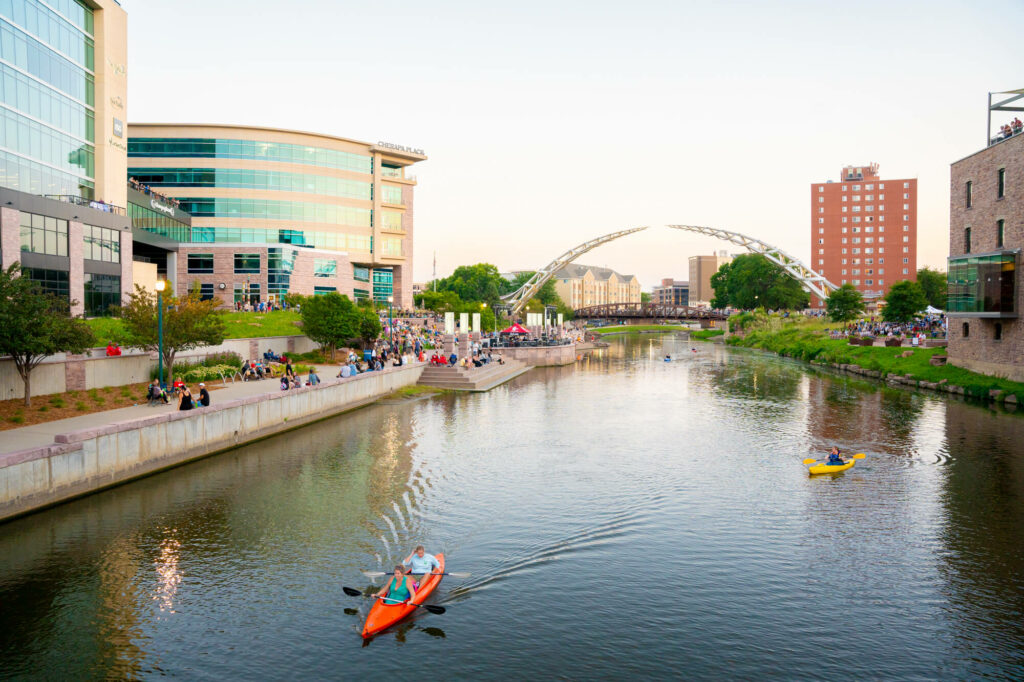
Continued investment in downtown’s infrastructure, parks, and the visitor industry will help spur on private sector investment, which leads to more, better paying jobs and an improved housing market. Take the Downtown River Greenway, for example. A $10M investment some 15 years ago has since generated hundreds of millions of dollars in private investment, which in turn helps sustain our parks, libraries, and schools for generations through the additional property tax revenue it generates. Further investment in downtown is not only needed, like at Falls Park and in the street network, it makes for an outstanding return on investment.
Quality of Life & Talent Recruitment
As the downtown job market shifts even more heavily toward knowledge workers and technology professionals, Downtown Sioux Falls Inc. (DTSF) plays a crucial role in attracting and retaining talent by ensuring downtown has the amenities and qualities of place that businesses increasingly seek out. The jobs-follow-employees model hinges on quality of place and more specifically the quality of walkable urban places where talented knowledge workers are choosing to live.
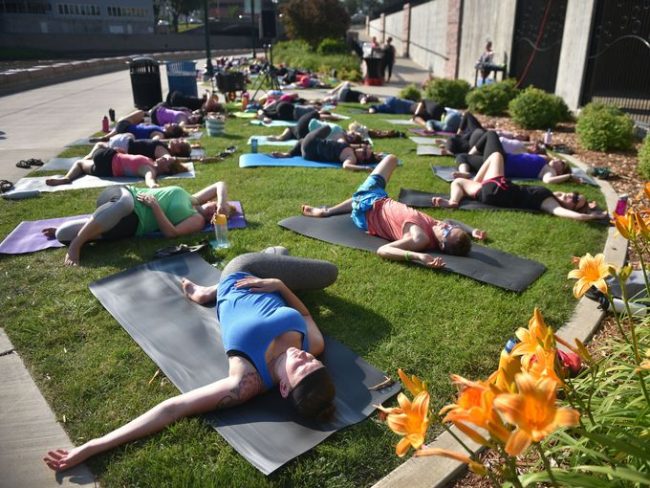
Walkable downtowns are where ideas converge and creativity flourishes. Vibrant downtowns are centers for innovation, where businesses of all sizes—from tech startups to family-owned shops—find opportunities to grow. Downtown Sioux Falls offers a unique blend of small-town charm and urban convenience, making it a hub of livability for young professionals, families, and retirees, fostering strong social connections and civic pride for all who embrace downtown. Investing in Downtown Sioux Falls’ walkability ensures it remains a space where people want to gather, linger, and engage with one another. DTSF is a ready-made vehicle for making that happen.
Equity
Downtown Sioux Falls is a place of inclusivity, where people from diverse backgrounds come together to work, live, and play. But is downtown as welcoming as it should be?
Urban place management organizations (UPMO), like DTSF, are increasingly prioritizing equitable development and growth that does not displace residents nor exclude workforce opportunities. While UPMOs don’t typically set out to address these issues, they have increasingly collaborated across sectors to improve offerings for all socioeconomic levels. UPMOs are embracing collaborative approaches, engaging community cooperation, public and private leadership, and thoughtful planning that encourages strategic, place-based development designed to build community wealth, inclusion and accessibility.
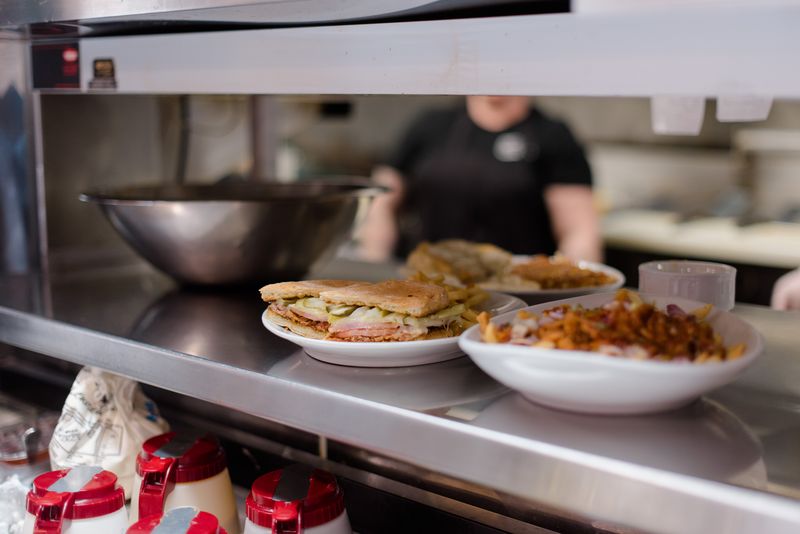
If we are to strive to make downtown more inclusive for diverse residents and employers, consideration needs to be given to how to make it easier for all kinds of people to live and work downtown, what workforce and housing strategies to implement, and how to encourage more transportation access. DTSF can bring clarity to these issues, turning challenges into opportunities by working with the public and private sectors at all levels to encourage investment in and support for downtown. By prioritizing equitable development, we can ensure that downtown’s growth benefits everyone in our community.
Where the Future of Sioux Falls Begins
While small in physical size, downtown is immensely valuable, efficient, inclusive, and resilient on multiple levels. Downtown is not just vital to a city’s economic health but to its cultural vibrancy. It is the place where people consistently gather to celebrate, connect, and collaborate.
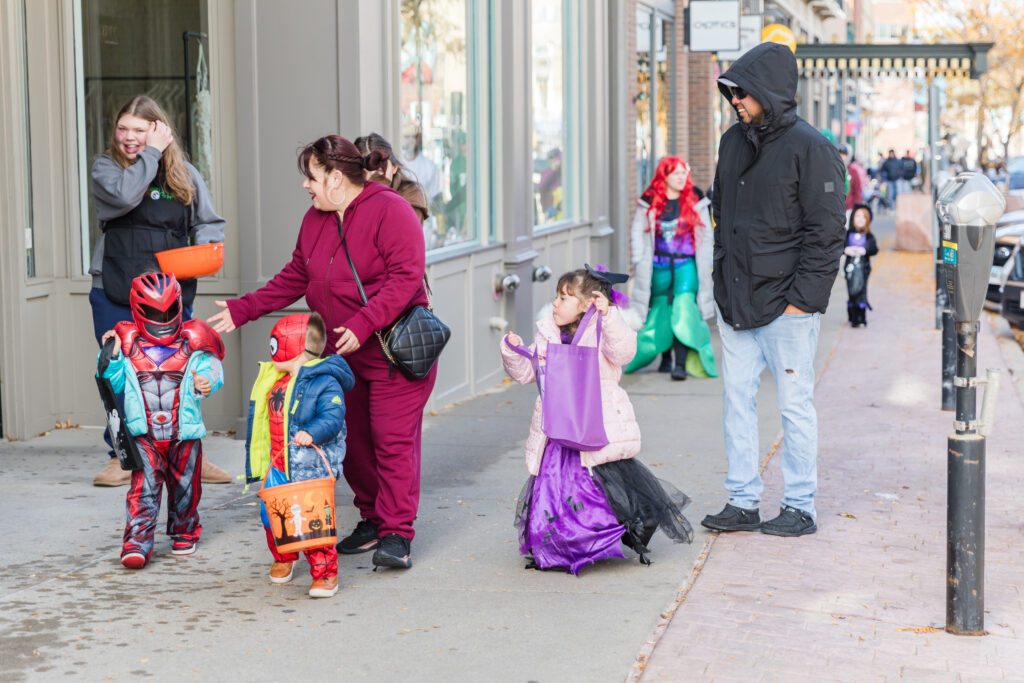
As members of this community, we have the opportunity to help shape the future of Sioux Falls through our downtown. Let’s continue to invest in this special place—not just for the benefits we see today but for the legacy we leave for future generations. Together, we can ensure that Downtown Sioux Falls and beyond remains thriving, dynamic, and reflects the best of who we are.

